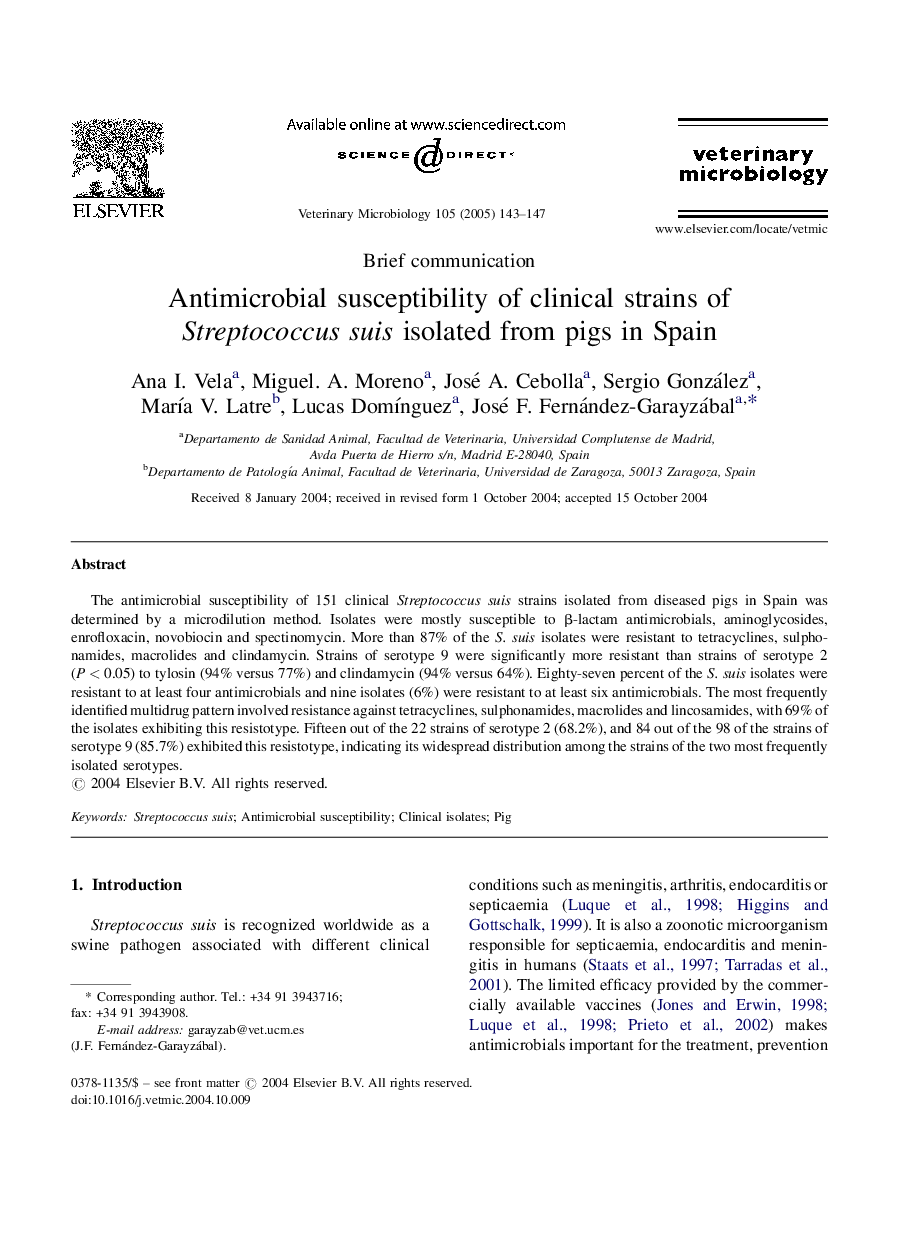| Article ID | Journal | Published Year | Pages | File Type |
|---|---|---|---|---|
| 8989767 | Veterinary Microbiology | 2005 | 5 Pages |
Abstract
The antimicrobial susceptibility of 151 clinical Streptococcus suis strains isolated from diseased pigs in Spain was determined by a microdilution method. Isolates were mostly susceptible to β-lactam antimicrobials, aminoglycosides, enrofloxacin, novobiocin and spectinomycin. More than 87% of the S. suis isolates were resistant to tetracyclines, sulphonamides, macrolides and clindamycin. Strains of serotype 9 were significantly more resistant than strains of serotype 2 (P < 0.05) to tylosin (94% versus 77%) and clindamycin (94% versus 64%). Eighty-seven percent of the S. suis isolates were resistant to at least four antimicrobials and nine isolates (6%) were resistant to at least six antimicrobials. The most frequently identified multidrug pattern involved resistance against tetracyclines, sulphonamides, macrolides and lincosamides, with 69% of the isolates exhibiting this resistotype. Fifteen out of the 22 strains of serotype 2 (68.2%), and 84 out of the 98 of the strains of serotype 9 (85.7%) exhibited this resistotype, indicating its widespread distribution among the strains of the two most frequently isolated serotypes.
Related Topics
Life Sciences
Agricultural and Biological Sciences
Animal Science and Zoology
Authors
Ana I. Vela, Miguel. A. Moreno, José A. Cebolla, Sergio González, MarÃa V. Latre, Lucas DomÃnguez, José F. Fernández-Garayzábal,
